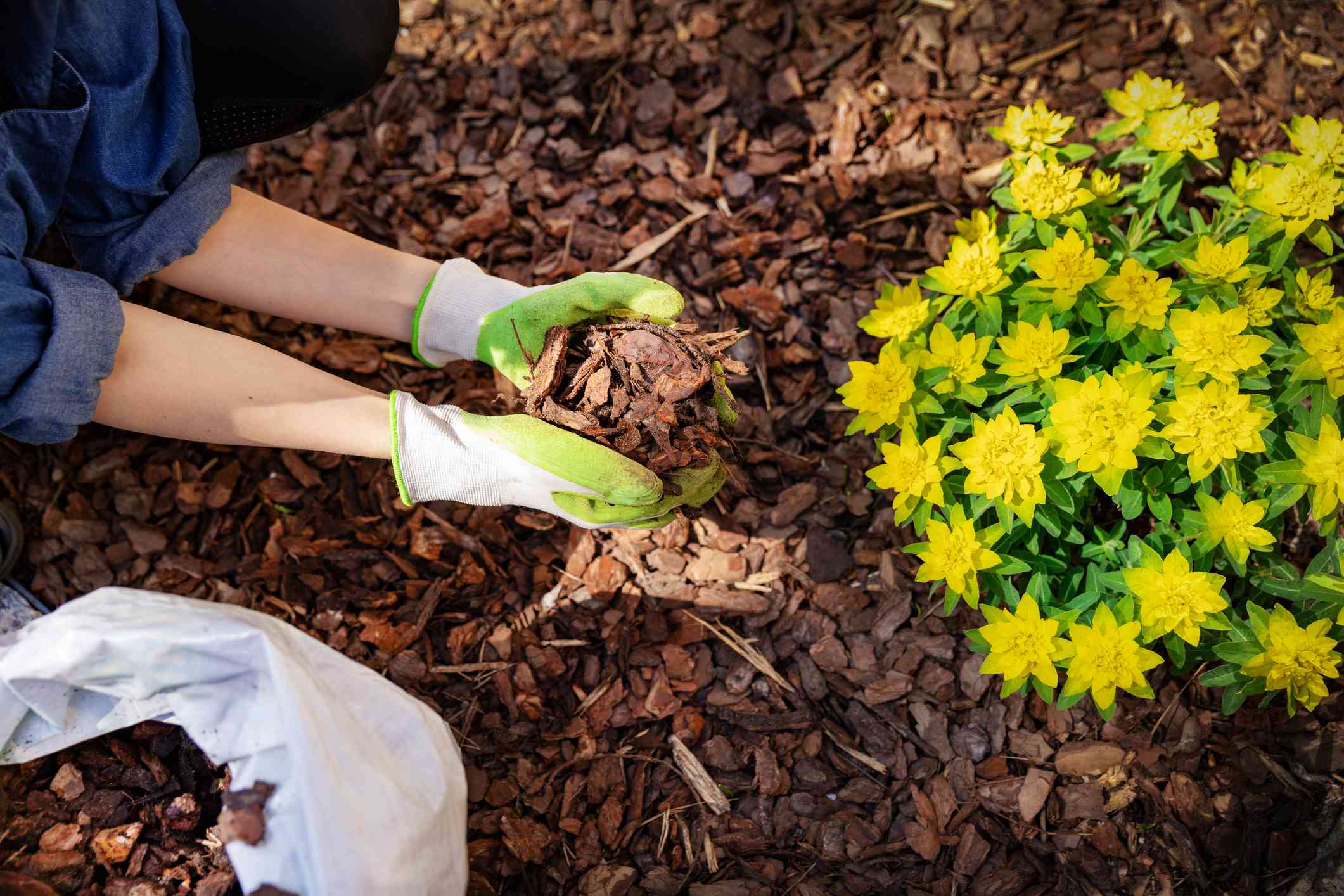Key Points
- How often mulch needs replacing depends on mulch type, condition, and size.
- Replacing mulch once a year is a good general rule to maintain the look and efficiency.
- Replacing mulch boosts your garden’s health by reducing weeds, retaining moisture, and preventing soil erosion.
One of the most satisfying gardening jobs is laying mulch for the first time. When done well, it creates an instantly defined, crisp appearance to your garden beds, and can make any landscaped area look polished and beautiful.
But fast forward a few seasons and your once-fresh mulch can look drab, dingy, and flat. This is a great sign you should probably replace your mulch, but do you really have to wait until things get this bad?
We asked experts how often we should be replacing mulch, and they all said the same thing.
Meet the Expert
- Gene Caballero is the co-founder of GreenPal, an online service for finding landscapers.
- Sarah Warner is the greenhouse manager at the Case Western Reserve University Farm.
- Marek Bowers is the founder of Bolder Green, a website that offers sustainable gardening advice.
How Do You Know It’s Time to Replace Your Mulch?
The Spruce / Jacob Fox
When to replace mulch depends on three major factors: type, condition, and size of mulch. Though it’s not a one-size-fits-all situation, most mulch needs replacing on an annual basis.
“Organic mulches, like wood chips or bark, generally need to be replaced once a year as they decompose and enrich the soil,” says landscaping pro Gene Caballero.
Inorganic mulch, like rubber or rocks, also need a refresh every year—or possibly every other year, depending on the appearance.
“The larger the mulch particles, the less you may need to mulch, and the smaller the mulch particles the more you may need to mulch,” says greenhouse manager Sarah Warner.
She explains that bigger organic mulch might take longer to break down while smaller-sized mulch will probably need to be replaced more often.
“Adding wood chips once a year may suffice but adding leaves three times a year may be needed,” Warner says.
Want more gardening tips? Sign up for our free gardening newsletter for our best-growing tips, troubleshooting hacks, and more!
You Can Source Free Mulch
The Spruce / Henry Wortock
If you’re holding off on replacing mulch because of your personal gardening budget, sustainable gardening expert Marek Bowers has a great tip.
“Sometimes you can get free mulch from your city,” he says. “Look up ‘free mulch near me’.”
This means, paired with local research for finding free plants, you can have the garden of your dreams with just a little extra legwork.
Check for Early Warning Signs
The best way to decide if you need to change out your mulch is to inspect it at the start of the season. Things might look fine at first glance, but there are little things that might signal a replacement is in order.
“If [your mulch] is noticeably thinner or degraded, it’s time to add a new layer to maintain its benefits like moisture retention, temperature regulation, and stopping weeds from growing,” Caballero says.
Aim to Replace in Spring or Late Fall
Cabellero assures us there’s no wrong time to replace mulch, but there are two ideal windows: spring or late fall. This is outside prime growing season, and allows for your garden to see the biggest benefits.
Replacing Mulch Really Benefits Your Garden
The Spruce / Jacob Fox
It might be easy to brush mulch off as an aesthetic choice for your garden beds, but not replacing it can have negative consequences; Caballero says it can lead to soil erosion, weed growth, and insufficient soil insulation.
Remove the Old Mulch First
Regardless of when you swap out your mulch, one important step you should take, says Cabellero, is actually removing the old mulch.
“It’s best to remove the old layer to prevent matting and to ensure the new mulch can effectively regulate temperature and moisture,” he says.











